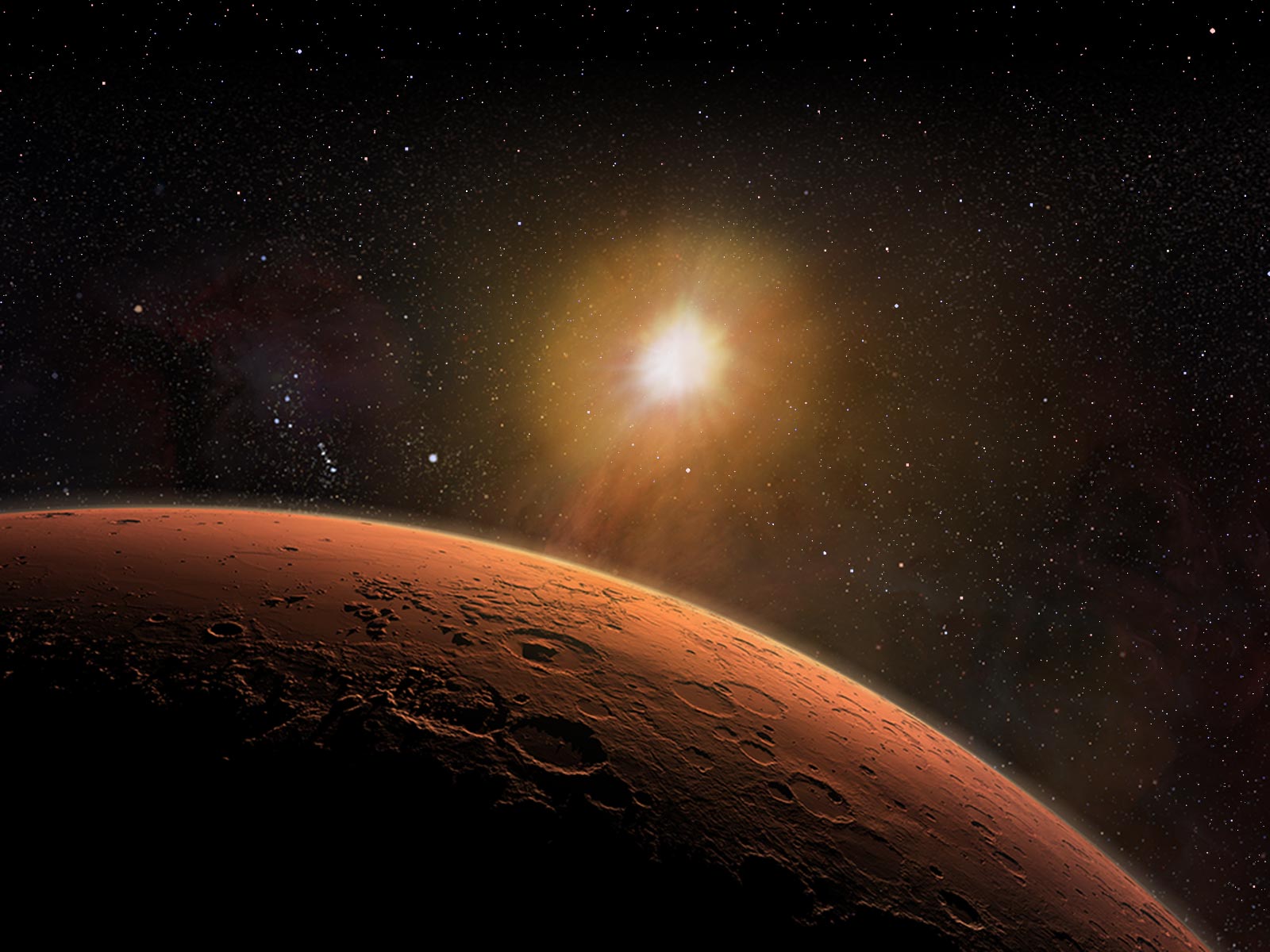


 U.Mars — Encyclopedia
U.Mars — Encyclopedia
Basic Astronomy and the Nighttime Sky
Seasons on planets are caused by these bodies' tilt with respect to plane in which they orbit the Sun.
As depicted in the illustration, the Earth's axial tilt (of about 23.3°) causes the Northern and Southern Hemispheres to be alternatingly tipped towards or away from the Sun at different times of year.

A result of this tipping is that, during Northern Summer, the Sun's rays fall more directly on (perpendicular to) the Earth's surface in the Northern Hemisphere; in the Southern Hemisphere, the sunlight strikes at a low angle. This warms the Northern Hemisphere substantially more than the Southern, although the situation is reversed a half of an orbit (half a year) later.
In addition to differences in the angles of sunlight, or the height of the Sun above the horizon during the day, daytime lasts longer in summer than in winter. At the two equinoxes, the durations of daytime and nighttime are the same. Refer to this page for an interactive simulation of this.
All planets with some degree of axial tilt experience seasons; those planets with a high degree of tilt — such as Uranus, at about 98° — have more extreme differences in seasonal temperature differences. If a planet had no axial tilt, then its surface temperatures would remain about constant all year; in effect, such a planet would have no seasons (Mercury, for example, is tilted by less than 1°).
See also: